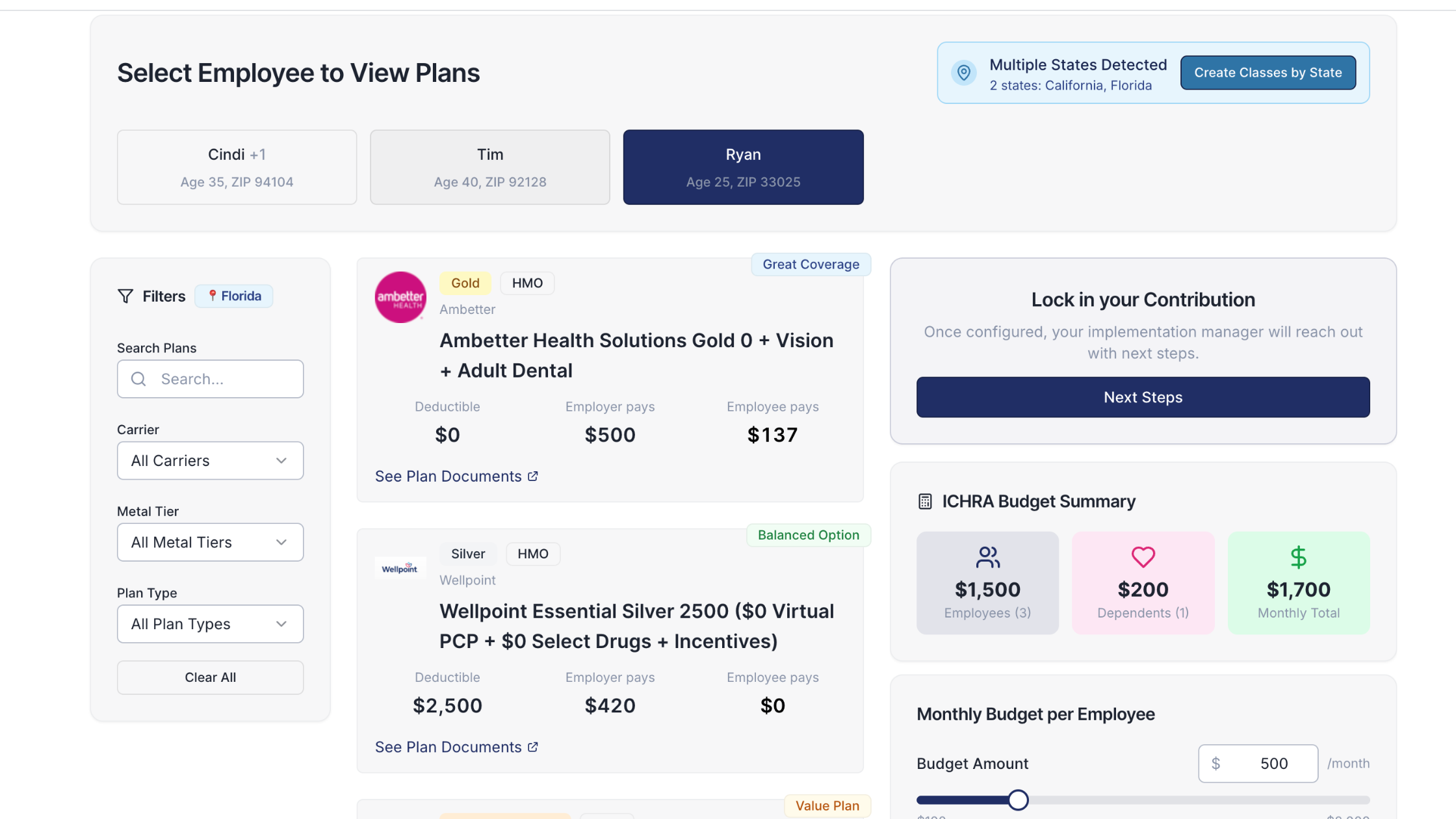What Happens to Unused HRA Funds: Complete Guide to Rollover Rules and Options

If you’re a benefits broker, HR leader, or company executive interested in maximizing your health benefits while minding the bottom line, understanding what happens to unused HRA funds rollover is essential. Health Reimbursement Arrangements (HRAs) are a tax-advantaged tool designed to empower employees and employers alike. However, many people wonder: Do unused HRA funds roll over to the next year, or are they simply forfeited? This guide provides a clear, up-to-date explanation of HRA rollover rules 2025 employer options, with practical takeaways for companies and employees seeking to get the most value out of their plans.
What Is an HRA, and Why Does Rollover Matter?
A Health Reimbursement Arrangement (HRA) is a type of employer-funded plan that reimburses employees for qualified medical expenses and health insurance premiums. Unlike Flexible Spending Accounts (FSAs) or Health Savings Accounts (HSAs), HRAs offer flexible designs and significant cost benefits for companies and their staff.
But here’s the catch: Unlike HSAs, employees don’t “own” the accounts—employers do. That makes HRA rollover rules a critical focus for plan administrators, brokers, and employees who want control over their benefits. The way an employer structures the plan can mean the difference between carrying over unused funds into the next plan year or losing them when time runs out.
Types of HRAs and Their Rollover Features
Understanding if and how unused funds are carried over depends on the HRA type and plan design:
Individual Coverage HRA (ICHRA)
- Rollover: Employers have discretion to allow annual rollovers, set caps, or choose not to allow rollover at all.
- Contribution Limits: No federal maximums, so employer sets the annual allowance.
Qualified Small Employer HRA (QSEHRA)
- Rollover: Rollovers are permitted up to federally set maximums for the year. If the previous year’s rollover + new contributions would exceed the federal cap, the maximum limit applies.
- 2025 Limits: $6,350/year (individual), $12,800/year (family).
Excepted Benefit HRA (EBHRA)
- Rollover: Yearly rollovers allowed up to the annual limit.
- 2025 Limit: $2,150 (per employee per year).
Integrated HRAs
- Rollover: Employers decide if and how much can be rolled over. Many reset at year-end, but annual rollover is possible if allowed in the plan.
How Employers Set HRA Rollover Rules for 2025
Employers have significant flexibility in setting HRA rollover rules for 2025. The key options include:
- Full Rollover: Employees can roll over all unused funds to the next year, up to any plan- or IRS-set limits.
- Partial Rollover: Only a portion of unused funds roll over, either as a fixed dollar amount or a percentage.
- No Rollover (“Use It or Lose It”): Unused balances are forfeited at the end of the plan year.
- Caps: Some employers set maximum rollover balances, tying the rollover amount to deductibles or other plan features.
- Monthly vs. Annual: Some plans allow unused monthly allowances to roll over within a plan year, but not to the next year.
- Grace Periods: It’s common to allow a ‘run-out’ window (typically 90 days) after plan year-end for submitting claims on expenses incurred during the coverage period.
What Happens to Unused HRA Funds if Rollover Isn’t Allowed?
If an employer chooses not to permit rollover, or if a plan’s maximum rollover threshold is reached, unused amounts are normally forfeited back to the employer at the end of the plan year. Employees cannot “cash out” HRAs—unlike HSAs, the benefit is not portable or payable in cash, and it only covers eligible claims.
Employees can typically submit claims for eligible expenses up to a set grace period after year-end (commonly 90 days) or until their employment ends. Any amount left after this time is returned to the employer.
HRA Fund Rollover Policies Explained
When designing an HRA, employers can tailor HRA fund rollover policies to fit business needs and workforce expectations:
- Consumer-Friendly Policies: Allowing rollover can foster satisfaction and prudent health-spending behavior.
- Cost Control: Forfeiture policies help companies control long-term costs by reclaiming unused balances.
- Transparency: Clear communication around rollover and forfeiture ensures employees don’t miss out on eligible expenses.
- Integration with Other Benefits: HRAs can be designed to work alongside other benefit accounts, but rollover policies must be clear to avoid confusion.
Common Scenarios: What Actually Happens?
- Full Annual Rollover
- Every unused dollar up to the plan or legal cap becomes next year’s allowance for out-of-pocket expenses.
- Partial Rollover
- Only a portion (e.g., 50% or $500 max) of an unused balance is added to the new year’s allowance.
- Forfeiture
- Balances left unused by the deadline are returned to the employer.
- Grace Period
- Employees have a limited period after the year ends to submit past-year eligible claims using any remaining HRA funds.
What Happens to Unused HRA Funds When Employment Terminates?
- Forfeiture Is Common: Most often, unused HRA balances revert to the employer. No cash payout is allowed.
- COBRA Rules: If COBRA continuation coverage applies, a departing employee might continue using leftover HRA funds, but only for eligible expenses and usually only for the period COBRA is in effect.
- Death: If an employee dies, some plans allow a “spend-down” for eligible medical expenses incurred by dependents or spouses, but not a cash withdrawal or payout.
Vendor Differences: Venteur vs. Other Platforms
Venteur stands apart in the HRA administration marketplace by prioritizing clear communication and flexible plan customization. Venteur empowers brokers and employers to easily set clear Unused HRA Funds Rollover or Forfeit policies through its user-friendly platform, ensuring that both HR leaders and employees always understand their options. Other vendors—such as Thatch, PeopleKeep, Take Command Health, Benefitbay, and more—may have distinct admin features or restrictions around how HRA rollovers are structured.
- Pro Tip: Always review the platform’s management tools and ensure the HRA documentation clearly explains rollover or forfeiture rules to workers and plan participants.
How to Make the Most of HRA Funds: Employer Tips
- Communicate Early and Clearly: Let employees know well in advance about rollover, grace period, and forfeiture rules—especially during annual enrollment.
- Offer Reminders: Send reminders as the end of the plan year approaches so nobody leaves money on the table.
- Set Thoughtful Policies: Consider allowing at least a partial rollover to encourage prudent healthcare decisions.
- Optimize For Efficiency: Work with tech-forward vendors (like Venteur) that offer transparent, customizable plan documentation and employee education.
Final Thoughts
HRA rollover rules vary widely. Whether employees can keep unused HRA funds into the next year depends entirely on how the employer designs their HRA. Most plans require careful review by brokers, benefits leaders, and plan participants to avoid surprises. If maximizing employee satisfaction and healthcare outcomes is a top goal, forward-thinking platforms like Venteur make it easy to design HRA policies that inspire trust, empower choice, and protect health—now and for years to come.
Ready to future-proof your benefits? Visit Venteur to see how you can offer flexible, transparent, and employee-focused health benefits that meet the needs of today’s workforce.
You got questions, we got answers!
We're here to help you make informed decisions on health insurance for you and your family. Check out our FAQs or contact us if you have any additional questions.
Employers have complete discretion. They can offer full, partial, or no rollover, set caps, or require that unused funds be forfeited at plan year-end.
- QSEHRA: $6,350 for individual and $12,800 for family coverage (combined total, including any rollovers).
- EBHRA: $2,150 for 2025.
- ICHRA and Integrated HRA: No federal cap; employers decide limits.
No, HRA funds typically revert to the employer. The only exception is COBRA coverage, during which remaining funds may be used for eligible expenses if COBRA applies.
- Most employers allow a grace or “run-out” period (commonly 90 days) after the end of the plan year for submitting eligible claims. After this, unused HRA funds are generally forfeited if no rollover is permitted.
- This grace period helps maximize the use of available funds.
- No. HRA funds cannot be paid out in cash or made taxable by distribution. They are for reimbursement of eligible expenses only.
- Any cash-out or non-medical use triggers penalties and taxes, and is prohibited by law.
Explore more related content
What is Venteur
Explore the best human-first Health Insurance platform
Simple, personalized health benefits
Sign up in minutes, define your contribution, and let your employees choose the health plan that works right for them
Integrations to make everything run smoothly
We'll connect with your payroll and finance systems to make deductions and premium payments seamless
Easy onboarding and off-boarding
In just a few clicks, add your roster and make updates on the fly. We'll handle it from there.
Venteur Certified Brokers to help your employees pick the right plan
Our trusted brokers ensure the best outcomes for employees and employers by unlocking health savings and providing unrivaled plan options.
AI-powered plan recommendations to give you confidence while you shop
Backed by 30 years of healthcare data, Venteur’s AI helps employees compare and choose the best plan for their unique situation.
Compliance and reporting because no-duh!
Venteur manages plan administration, reporting, and compliance so you can focus on growing your business.


